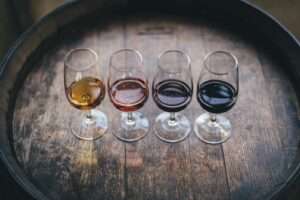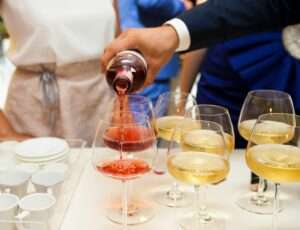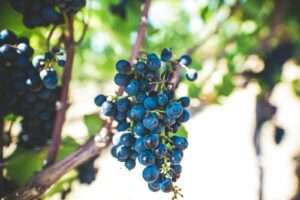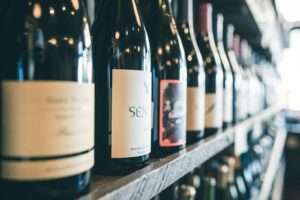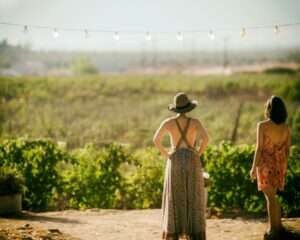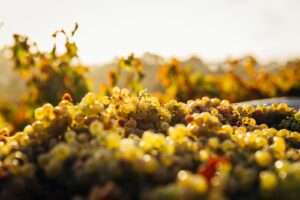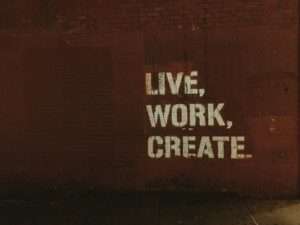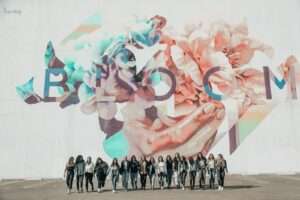Table of Contents
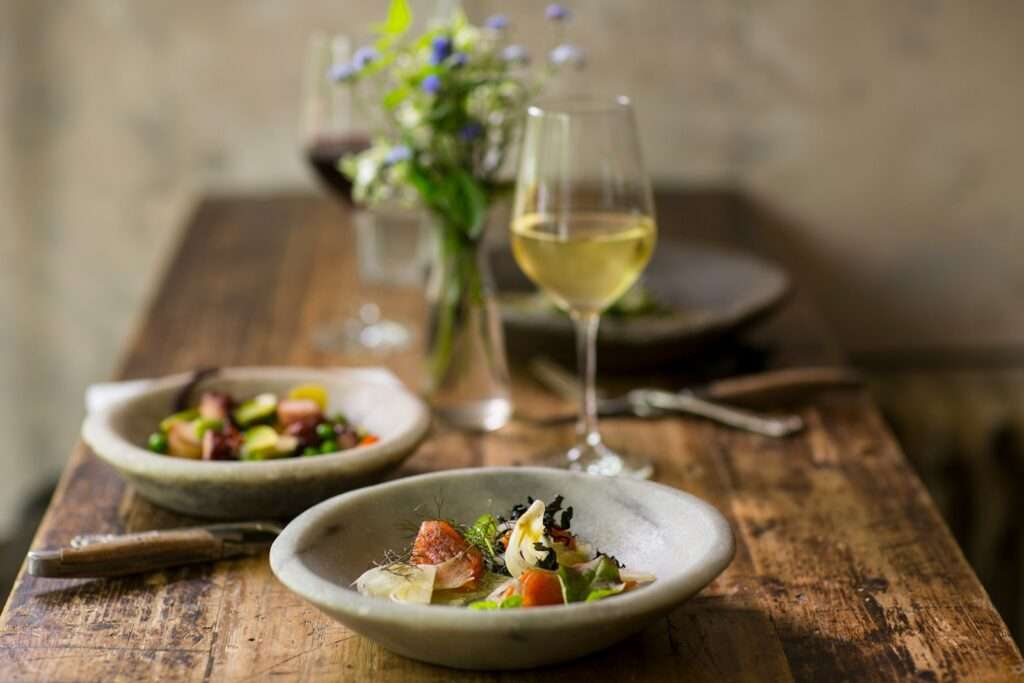
Wine Making Process Explained
From Grape to Glass, Your Ultimate Guide to How Wine Comes to Life
Ever wonder how a humble grape turns into that glass of Pinot Noir you’re sipping? The wine making process explained is like peeling back the curtain on a magic trick—it’s part science, part art, and a whole lot of patience.
I’ve stood in vineyards, watched fermentation tanks bubble, and even crushed a few grapes myself (messy, but fun). It’s a journey that’s been honed over thousands of years, and yet every bottle still feels like a small miracle.
This guide is your deep dive into the wine making process explained—no jargon overload, just the good stuff. I’ve chatted with winemakers, tasted unfinished wines (some better than others), and learned what makes this craft tick.
We’ll walk through every step: growing grapes, harvesting, crushing, fermenting, aging, bottling, and beyond. Whether you’re curious about what’s behind your Chardonnay or dreaming of hosting a team building experience with a winery twist, understanding the wine making process explained opens up a whole new appreciation. Ready to see how wine comes to life? Let’s get started.
Why the Wine Making Process Explained Matters

Why care about the wine making process explained? Because it’s the heartbeat of every sip. That Sauvignon Blanc with its zesty kick or that Cabernet Sauvignon with its bold depth—they don’t just happen. It’s a story of dirt, weather, and human hands, stretching back to ancient Egyptians who fermented grapes in clay jars. I tasted a Merlot once and thought, “This is just fruit juice, right?” Then I learned the layers—months, sometimes years—of work behind it. Mind blown.
Knowing the wine making process explained isn’t just trivia—it changes how you drink. You’ll spot the care in a well-balanced Rosé or the grit in a rustic Sangiovese. It’s also a conversation starter—perfect for a team building chat over glasses. Plus, it’s flat-out cool to understand how nature and craft collide. Let’s break down the wine making process explained and see what makes your favorite bottle tick.
Flavor’s Origin Story
The wine making process explained is where taste begins. Soil, sun, and rain shape the grape; every choice after—crushing, fermenting, aging—builds the flavor. I sipped a Pinot Grigio from a rainy year once—crisper than usual. It’s wild how it all connects.
Craft Meets Nature

Winemaking’s a dance between control and chaos. Too hot? Grapes ripen fast. Too cold? Flavors stall. I’ve seen winemakers sweat over weather apps—it’s real stakes. The wine making process explained shows how they tame the wild into something you love.
Sip Smarter
Get the wine making process explained, and you’re not just drinking—you’re decoding. Why’s this Malbec so smoky? Oak barrels. That Riesling’s sweet? Late harvest. It’s like having X-ray vision for wine.
Step 1: Growing the Grapes – The Wine Making Process Explained Starts Here
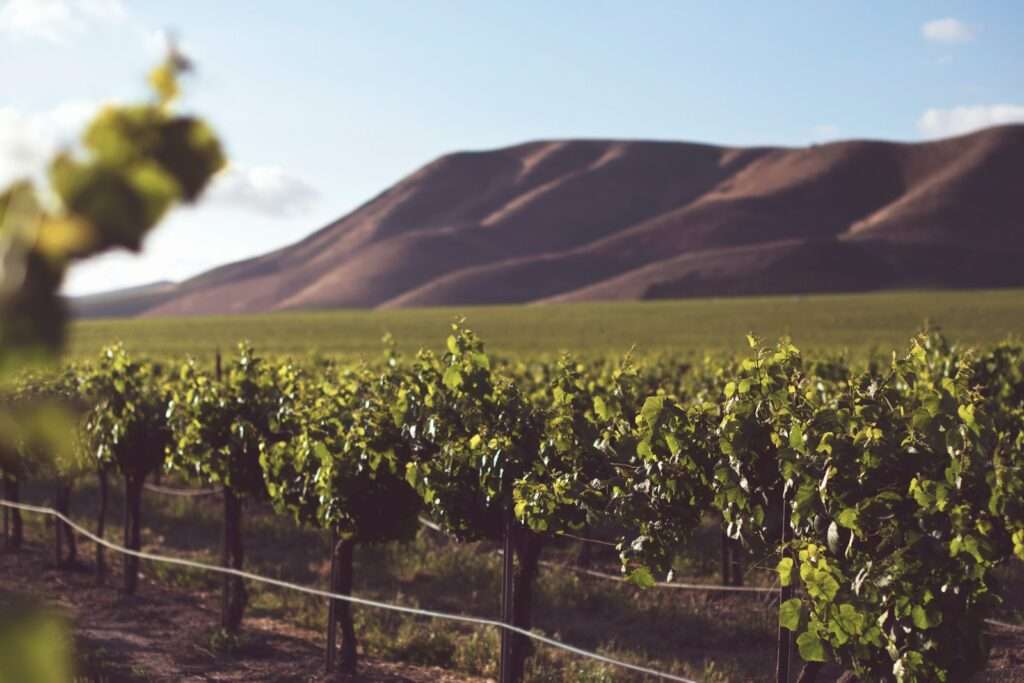
The wine making process explained kicks off in the vineyard. Grapes aren’t just fruit—they’re the soul of wine, and growing them right sets everything else up. I’ve walked rows of vineyards, dodging bees and marveling at how much goes into those little orbs.
Terroir: The Magic Word
Terroir is the fancy term for “where and how grapes grow.” Soil, climate, slope—it all matters. Sandy soil drains fast, stressing vines for bold reds like Syrah. Limestone keeps water for crisp whites like Chenin Blanc. I tasted a Tempranillo from Spain’s rocky hills—earthy and intense. That’s terroir in the wine making process explained.
Vine Care
Vines need love—pruning, watering, pest control. Too many leaves? Grapes get lazy. Too few? They burn. Winemakers trim in winter, train vines on wires, and pray for balance. I saw a guy hand-pick aphids off vines—dedication in the wine making process explained.
Ripening Watch
Sugar, acid, and tannins ripen over months. Too early, and wine’s tart; too late, it’s flabby. They test with gadgets or just chew a grape. I tried it—sour as heck, but you get the gist. Timing’s everything in the wine making process explained.
Step 2: Harvesting – Timing the Pick
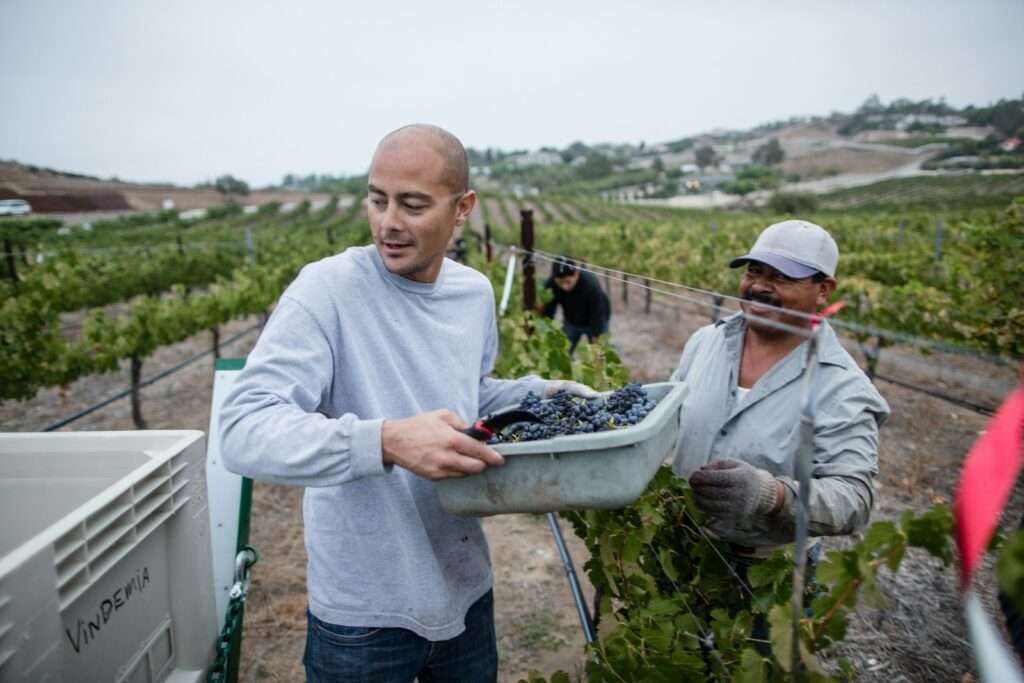
Harvest is go-time in the wine making process explained. Pick too soon or too late, and the wine’s off. I’ve watched crews hustle at dawn, snipping clusters like their lives depend on it—because they kinda do.
When to Harvest
Sugar’s the signal—measured in Brix. Whites like Pinot Gris go at 20-23 Brix; reds like Zinfandel push 24-26. Hot years speed it up; cool ones drag it out. I tasted unripe grapes once—pucker city. The wine making process explained hinges on this call.
Hand vs. Machine
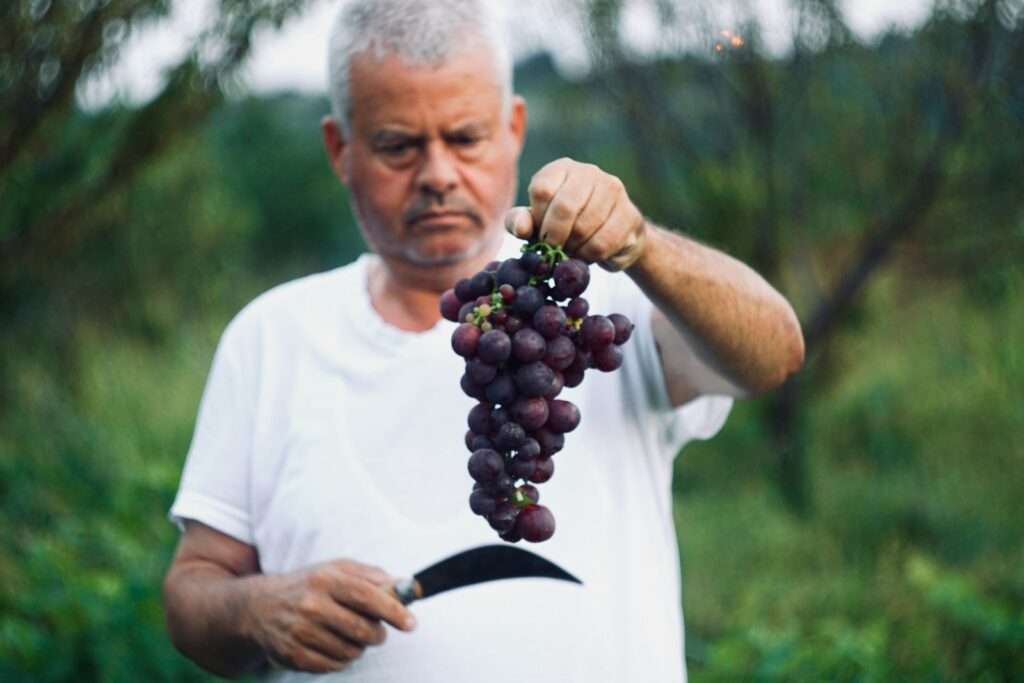
Hand-picking keeps grapes whole—pricey but precise for Prosecco or Grenache. Machines shake vines—fast, cheap, good for big Cabernet hauls. I saw a machine whir through—grapes flew like confetti. Both work in the wine making process explained.
Night Moves
Cool nights preserve acid and aroma—common for Sauvignon Blanc. Day picks suit reds needing warmth. I stumbled into a midnight harvest once—floodlights, coffee, pure chaos. Timing’s art in the wine making process explained.
Step 3: Crushing and Pressing – Juice Time

Once harvested, grapes hit the crush in the wine making process explained. This is where juice flows and wine starts breathing.
Crushing
Old-school? Foot-stomping—messy, fun, rare now. Modern? Destemmer-crushers split skins gently. Reds like Malbec ferment with skins for color; whites like Chardonnay skip it. I stomped grapes at a festival—sticky, but I get the hype. Crushing’s visceral in the wine making process explained.
Pressing
Presses squeeze juice out—gentle for whites, harder post-ferment for reds. Pneumatic presses rule—soft, clean. I watched one press Pinot Noir—juice gushed like a river. Pressing shapes flavor in the wine making process explained.
Must Magic
The juice—aka must—is raw wine. Cloudy, sweet, alive. Winemakers tweak it—add sulfur to kill wild bugs, adjust sugar. I smelled must once—grape candy with an edge. It’s the base of the wine making process explained.
Step 4: Fermentation – Where Wine Gets Born
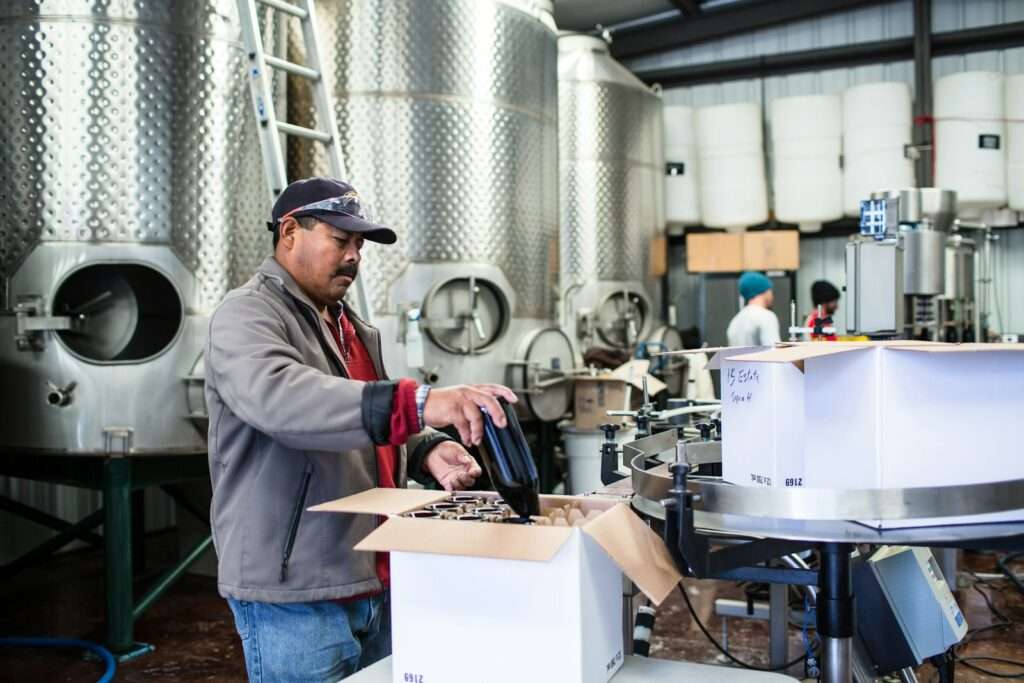
Fermentation’s the heart of the wine making process explained—juice turns to alcohol, and magic happens. Tanks hum, yeast feasts, and the air smells like bread and booze.
Yeast Power
Yeast eats sugar, spits out alcohol and CO2. Natural yeast on skins is wild—unpredictable, funky. Commercial yeast is steady—think Merlot consistency. I sniffed a wild ferment—sour and weird, but cool. Yeast drives the wine making process explained.
Red vs. White
Reds ferment with skins—7-14 days, 75-85°F—for color and tannins. Whites go cooler, 50-65°F, no skins, for freshness. I saw a Syrah vat—purple foam everywhere. Temp’s key in the wine making process explained.
Punching Down
Red skins float, forming a cap. Winemakers punch it down or pump juice over—keeps it wet, extracts flavor. I tried punching a Grenache cap—arm workout! It’s grunt work in the wine making process explained.
Step 5: Aging – Time’s Touch

Aging refines the wine making process explained. Fresh wine’s rough—time and barrels smooth it out.
Vessels
- Oak Barrels: Add vanilla, spice. Cabernet Sauvignon loves French oak; Chardonnay digs American. I smelled a barrel room—wood and wine heaven.
- Steel Tanks: Clean, crisp. Sauvignon Blanc stays pure. No oak, all fruit.
- Concrete: Old-school, subtle texture. Rosé gets a mineral kick.
Time
Whites age months; reds can go years. A Pinot Noir I tried aged 18 months—silky as heck. Aging’s patience in the wine making process explained.
Racking
Wine sits, sediment sinks. They siphon it off—racking—keeping it clear. I watched a Tempranillo rack—mucky bottom, clean top. Clarity’s craft in the wine making process explained.
Step 6: Bottling – The Finish Line
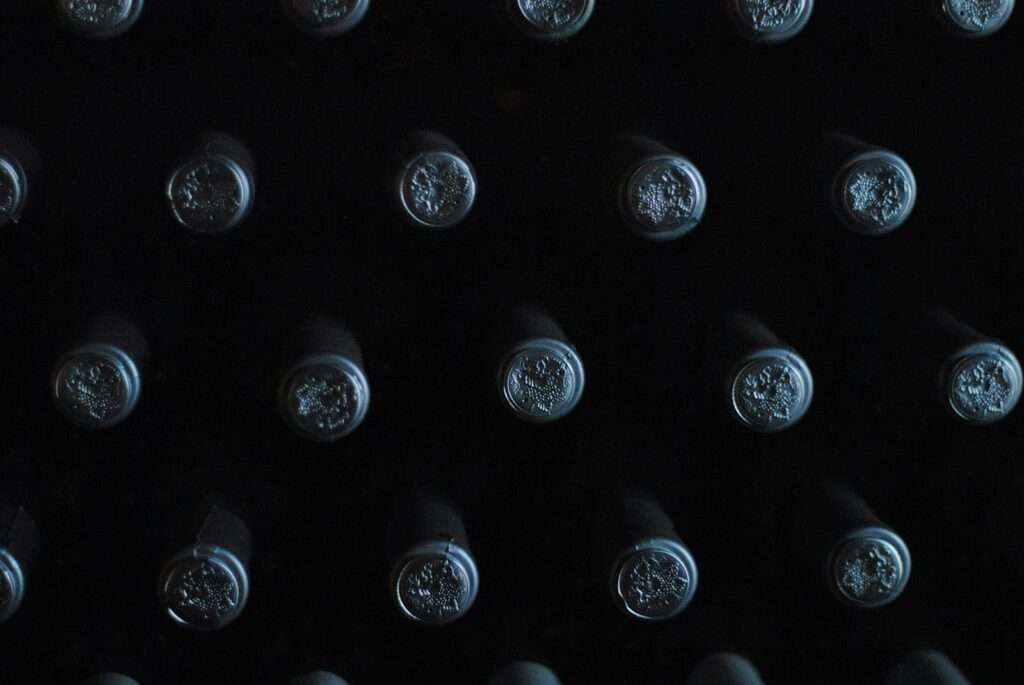
Bottling seals the wine making process explained. It’s the last dance before your glass.
Fining and Filtering
Fining drops gunk—egg whites, clay. Filtering polishes—think Pinot Grigio sparkle. Some skip it for raw vibes. I tasted unfiltered Zinfandel—cloudy but bold. It’s choice in the wine making process explained.
Bottling Day
Sterile lines fill bottles, cork or screwcap seals it. Labels slap on—art meets function. I saw a Prosecco line—bottles whizzing like a factory dance. Precision ends the wine making process explained.
Resting
Some wines rest post-bottle—Cabernet might chill for months. I opened a young Malbec once—harsh. Time’s final tweak in the wine making process explained.
Variations in the Wine Making Process Explained
Not all wines follow the script. Here’s how the wine making process explained shifts.
Sparkling Wines

Champagne ferments twice—once in tank, once in bottle—for bubbles. Prosecco skips the bottle part. I popped a bubbly mid-process—flat but fizzy promise. Bubbles twist the wine making process explained.
Rosé
Short skin time—hours, not days—gives Rosé its pink. I tasted a fresh batch—strawberry city. Quick’s the trick in the wine making process explained.
Orange Wine
White grapes ferment with skins—like reds. Funky, bold. I tried an orange wine—apricot and grit. Weird’s wonderful in the wine making process explained.
See It Yourself: Wine Making Process Explained in Action
Curious? Visit a winery—crush season’s best. I stomped grapes, sniffed fermenting Grenache, tasted barrel samples—raw education. Or host a tasting with a team building experience—guided kits bring the process home. It’s the wine making process explained, live.
Winery Tips
- Fall: Harvest buzz—see crushing, fermenting.
- Ask: “How’s this year’s crop?” Winemakers spill.
- Taste: Barrel samples show the wine making process explained mid-flight.
Wine Making Process Explained: Deep Dive
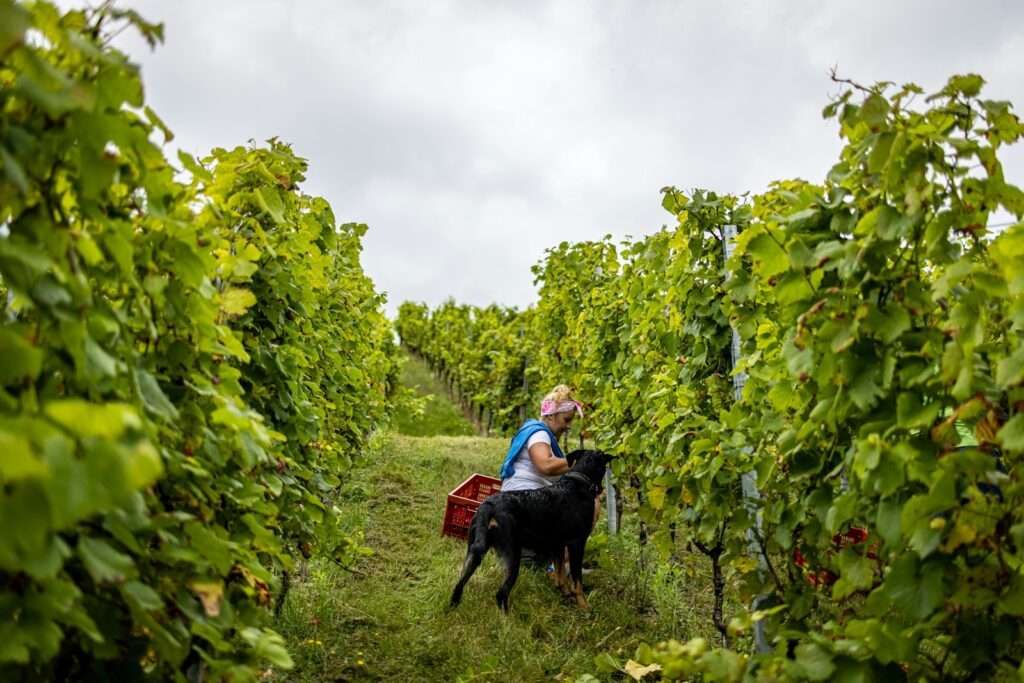
Grape Varieties
- Pinot Noir: Thin skins, early ripener. Gentle press, short ferment—silk in a bottle.
- Chardonnay: Versatile—oak or steel. Long aging for butter, quick for crisp.
- Cabernet Sauvignon: Thick skins, late harvest. Long ferment, heavy oak—bold beast.
- Sauvignon Blanc: High acid, early pick. Cool ferment—zing preserved.
Science Bits
- Sugar to Alcohol: Yeast eats 1% Brix = ~0.55% alcohol. 24 Brix? 13% wine. Math’s in the wine making process explained.
- Malolactic: Bacteria softens acid—Chardonnay gets creamy. I tasted pre- and post—night and day.
Conclusion: The Wine Making Process Explained Unlocks Every Bottle
The wine making process explained is your backstage pass to every glass. From vineyard dirt to bottled bliss, it’s a saga of grit, craft, and nature’s whims. I’ve tasted the raw stages—sour must, oaky drafts—and it’s deepened every sip since. Understanding the wine making process explained isn’t just knowledge; it’s a connection to the hands and vines behind your Pinot Grigio or Tempranillo.
So, next time you pour, think of the journey—then share it. Host a tasting, visit a winery, or dive into a team building experience that brings it alive. The wine making process explained turns drinking into appreciating. Cheers to that—here’s to grapes, grit, and glorious wine!
Hashtags: #WineMakingProcess #WineJourney #FromGrapeToGlass #WineLoversLearn #TeamBuildingWine #WineCraft #SipTheStory #WineMakingExplained #VineToBottle #WineMagic
Find out more about our experiences.
You may also want to check out our gallery for past events.
Other interesting links
- CUSTOMIZE YOUR EXPERIENCE
- Team Building blog
- Wine Courses
- THE BLIND TASTING COMPETITION
- THE PERFECT BLEND COMPETITION
- TEQUILA & MEZCAL EXPERIENCE
- Food & Wine Pairing
- VIRTUAL EXPERIENCES
Links to other interesting articles:
73-powerful-team-building-activities
unlock-the-fun-with-18-virtual-team-building-activities
powerful-tips-for-crafting-a-company-culture
Links to other interesting articles:
19-amazing-virtual-team-building-activities
35-powerful-team-building-activities



